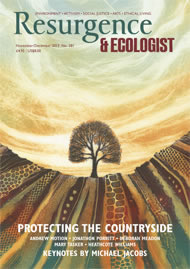Urban farming has the capability to both inspire and divide. The large-scale indoor salad-growing businesses emerging in cities like New York and Chicago could potentially reduce the supply chain by thousands of miles, but at the same time growing vegetables on the colder east coast is likely to require more energy than in sunny California. And do we really want to eat food that has been grown without soil?
Likewise, small-scale city rooftop and derelict land sites can also be used to grow food, although they are unlikely to provide much more than a marginal amount of an urban population’s food needs.
However, what these arguments and concerns ignore is what is really driving the widespread passion and excitement now being generated by urban farming – namely the multitude of positive socio-economic and environmental impacts that it offers.
The sudden appearance of a herb and vegetable garden in the middle of a concrete sprawl is like the arrival of colour in springtime. Talk to the schoolchildren visiting Hackney City Farm, or the volunteers working at Cultivate London, a project making use of derelict land in West London, or the squatters who created Kew Bridge Eco-Village (a story recently made into a film, Grasp the Nettle). All of them will talk of being reconnected to Nature and our food system and of experiencing something entirely different from a world of celebrities, iPads and shopping.
As more and more of the world’s population moves to an urban life, there’s a desperate need to bring more Nature and food production into the city. Carolyn Steel, the author of Hungry City, writes in the introduction to Farming the City: “In order to flourish, we need the company of others; yet the closer we cluster together, the further removed we get from our sources of substance.”
Farming the City is a welcome attempt to both inspire and document urban food projects and ideas that are continuing to develop. As well as unpicking the incredibly diverse academic research being carried out on urban food – from edible landscapes to food poverty – the book showcases 35 urban farming projects from around the world. The authors have also thrown in a few more practical chapters on, for example, how to lobby local politicians and governments and how to build a successful food project of your own.
The diversity of the farm projects profiled, from a vertically stacked greenhouse aiming to produce 50% of Singapore’s green leafy vegetables, to the educational Common Good city farm in Washington DC, is a testament to the interest and inspiration urban farming is generating. It also, importantly, offers an alternative vision for our cities.
As millions of urban dwellers engage with local food networks and allotments and experiment with growing produce themselves, the ‘leave it to Tesco’ approach (as others have called it) is being ditched in favour of a new kind of vision for food. “What would happen,” asks Steel, “if rather than let market forces shape our lives through food, we were to use food as a tool to shape the world in better ways?”
The answer, according to the examples in this book, is that we would end up with a much more inspiring one!







